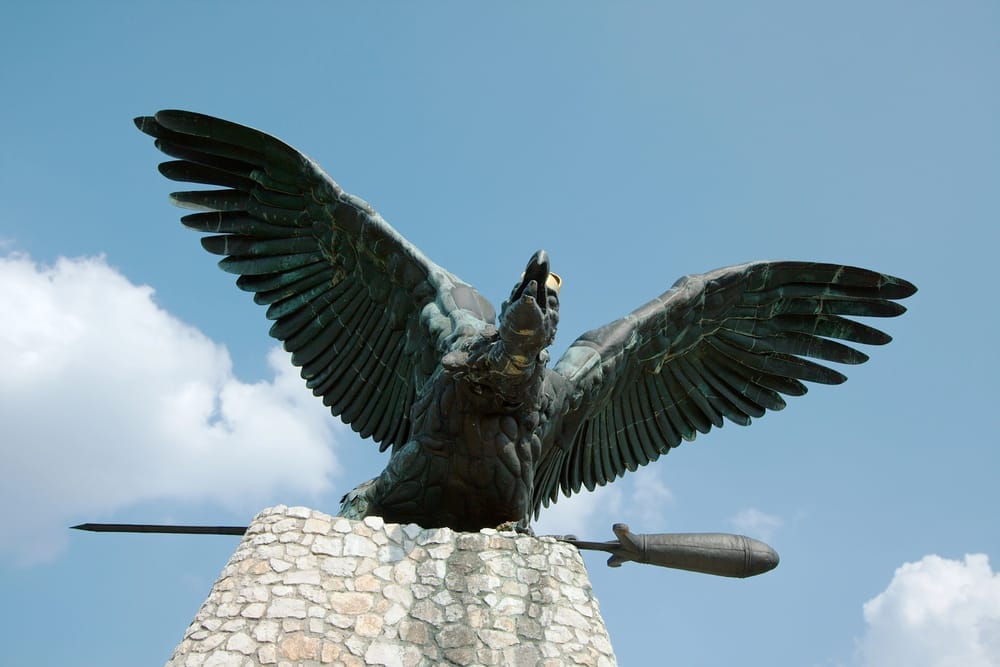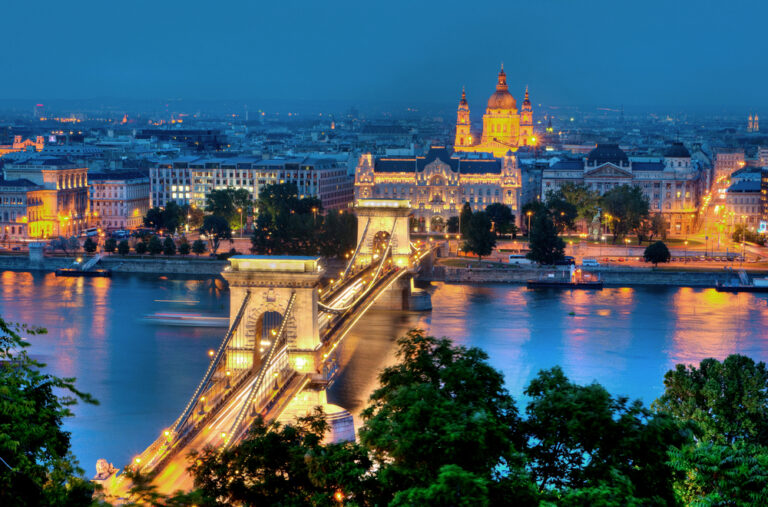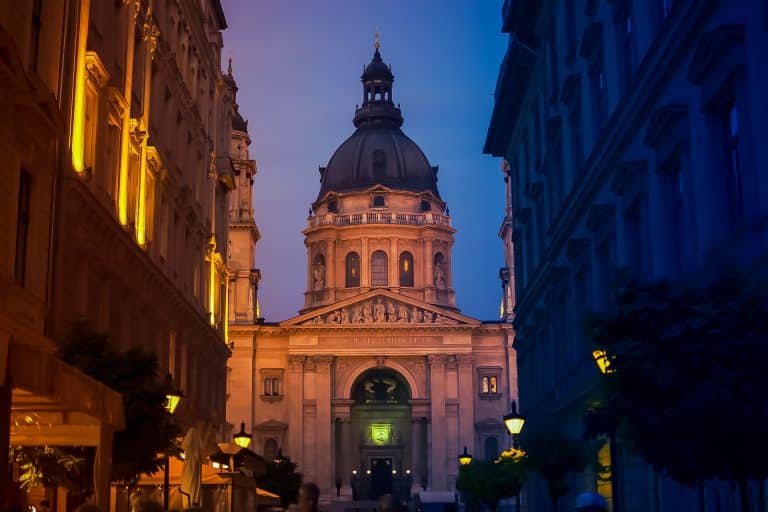National Animal of Hungary : Info about Hungarian National Symbol
Are you planning your trip to Hungary and want to know about the National Animal of Hungary?
This post is from my new series of posts where I talk about the National Animals of the countries in Europe. I have developed a strong interest in writing about this particular topic as part of a series.
The reason for my enthusiasm is that countries around the world choose symbols that hold significant meaning for their people and serve as a representation of their history and culture.
With that in mind, let’s explore the significance of Hungary’s national animal as a symbol.
National animals occupy a special place among these symbols as they often embody captivating stories of legends, resilience, and identity.
Hungary, with its rich history and culture, serves as an excellent example. Its national animal, a magnificent and mythical bird, holds much more than mere existence. It truly represents the essence of the country.
So, let us delve deeper into this captivating subject!
What is the National Animal of Hungary?

The national animal of Hungary is the Turul. The Turul is a mythical bird of prey that holds great significance in Hungarian folklore and mythology. It is often depicted as a large falcon or hawk with a crown on its head. The Turul symbolizes power, strength, and the spirit of the Hungarian people.
What is the significance of the turul in Hungarian culture?
The turul holds a significant place in Hungarian culture, deeply rooted in the country’s mythology and folklore. Originating from ancient Hungarian mythology, the turul is revered as a mythical bird of prey with a prominent role in the folklore and artistic heritage of Hungary.
Origin and mythology of the turul
The turul plays a central role in Hungarian mythology, believed to be a divine messenger and a symbol of power and strength. Legends depict the turul as a mythical bird of prey with an esteemed position in Hungarian folklore and traditions.
Role of the turul in Hungarian folklore
In Hungarian folklore, the turul is celebrated as a sacred symbol, often associated with the protection and prosperity of the Hungarian people. Its presence in traditional tales and rituals establishes its significance in the cultural fabric of Hungary.
Depiction of the turul in Hungarian art and architecture
The turul is prominently depicted in various forms of Hungarian art and architecture, symbolizing the nation’s cultural identity and historical heritage. Its representation in artistic expressions reflects its enduring influence on Hungarian creativity and aesthetics.
Why is the turul considered the national symbol of Hungary?
The turul is revered as the national symbol of Hungary due to its deep-rooted connections with Hungarian nobility and its prominent portrayal in the country’s coat of arms. Its historical significance and modern interpretation have solidified its status as a cherished national emblem.
Connection between the turul and Hungarian nobility
The turul is intricately linked to Hungarian nobility, symbolizing authority, leadership, and the noble heritage of the Hungarian people. Its association with the ruling class underscores its role as a symbol of prestige and dignity.
Depiction of the turul on the Hungarian coat of arms
The image of the turul is prominently featured on the Hungarian coat of arms, signifying its official recognition as a national emblem. Its presence on the coat of arms exemplifies its enduring influence on the country’s historical and contemporary symbolism.
Modern interpretation of the turul as a national symbol
In modern times, the turul continues to be revered as a potent symbol representing the pride, resilience, and unity of the Hungarian nation. Its portrayal in contemporary contexts highlights its significance as a unifying element in Hungary’s cultural and social identity.
How does the turul relate to Hungarian history and heritage?
The turul has deeply ingrained itself in Hungarian history and heritage, playing pivotal roles in tribal history, the Árpád dynasty, and as a cherished national symbol encapsulating the country’s rich cultural legacy.
Role of the turul in Hungarian tribal history
In Hungarian tribal history, the turul embodies the valor and spirit of the ancient Hungarian tribes, symbolizing bravery, freedom, and the pursuit of cultural independence. Its mythical significance resonates throughout Hungary’s early tribal narratives.
Significance of the turul in the Árpád dynasty
The turul holds historical significance in the Árpád dynasty, serving as an emblem of power and sovereignty. Its association with the ruling dynasty further solidifies its place as a revered symbol in Hungary’s royal lineage and historical chronicles.
Cultural importance of the turul as a Hungarian national symbol
The turul stands as a cultural icon symbolizing the essence of Hungarian identity, encompassing heritage, bravery, and national pride. Its enduring cultural importance resonates across generations, symbolizing the country’s unique cultural ethos and historical legacy.
Where can the turul be found in Hungarian landmarks and monuments?

The presence of the turul in Hungarian landmarks and monuments is a testament to its enduring influence in the country’s cultural heritage, heraldry, and symbolism. From Budapest to historical sites and museums, the turul’s majestic symbolism is intertwined with Hungary’s architectural and artistic treasures.
Representation of the turul in Budapest’s cultural heritage
Budapest, the capital city of Hungary, showcases the turul’s representation in various cultural landmarks, reinforcing its iconic status in the city’s rich historical and artistic landscape. The turul’s presence adds to the allure of Budapest’s cultural heritage.
Depiction of the turul in historical sites and museums
Historical sites and museums in Hungary prominently feature the turul, underscoring its role as a symbol of national pride and historical legacy. Its depiction in these cultural institutions serves as a profound reminder of its enduring influence on the country’s historical narrative.
Usage of the turul in Hungarian heraldry and symbolism
The turul is intricately woven into Hungarian heraldry and symbolism, adorning emblems, flags, and official regalia as a representation of the country’s noble heritage and cultural symbolism. Its presence in national symbolism reinforces its status as a cherished national icon.
What are the connections between the turul and neighboring countries?
The symbolic significance of the turul extends beyond Hungary, with its influence evident in neighboring countries such as Slovakia, Romania, Croatia, and Serbia, reflecting shared historical and cultural ties within the Carpathian and Danubian regions.
Presence of the turul in Slovakian, Romanian, and Croatian cultures
The presence of the turul in the cultural narratives of Slovakia, Romania, and Croatia showcases the cross-cultural impact of this mythological bird of prey, signifying shared symbolism and historical influences across the region.
Historical influence of the turul in Carpathian and Danubian regions
The historical influence of the turul in the Carpathian and Danubian regions underscores its enduring significance as a symbol of cultural interconnectedness and shared historical heritage among the countries in these geographic areas.
Shared symbolism of the turul in Hungary and Serbia
The shared symbolism of the turul in Hungary and Serbia reflects the cultural affinities and historical connections between the two nations, encapsulating the enduring legacy of the turul as a symbol of unity, strength, and shared heritage.
What are the sacred animals of Hungary?
Turul
The Turul is considered a sacred animal in Hungary. It is a mythical bird of prey with strong symbolism in Hungarian folklore and mythology. The Turul is often depicted as a large falcon or hawk-like creature with a crown on its head. It is believed to be a messenger of the gods and a guardian of the Hungarian people. The Turul is associated with power, strength, and protection. It is also seen as a symbol of national identity and pride in Hungary.
Hungarian Grey Cattle
The Hungarian Grey Cattle, also known as the Hungarian Steppe Cattle, is another sacred animal in Hungary. This breed of cattle has been a part of Hungarian culture and history for centuries. It is known for its distinctive grey coat and robust physique. The Hungarian Grey Cattle played an important role in the agricultural economy of Hungary and was highly valued by the Hungarian people. Today, efforts are being made to preserve and protect this endangered breed as a cultural heritage of Hungary.
National symbols of Hungary
National Flag:
The national flag of Hungary consists of three horizontal stripes of red, white, and green. The red symbolizes strength, the white represents fidelity, and the green symbolizes hope.
Coat of Arms:
The coat of arms of Hungary features a shield divided into two parts. The right side contains the Árpád stripes, which are red and silver, representing the ruling dynasty of Hungary. The left side shows a small hill with a crown on top, representing the crown of Saint Stephen, the first king of Hungary.
National Anthem:
The national anthem of Hungary is called “Himnusz” (Hymn). It was written by Ferenc Kölcsey in 1823 and became the official national anthem in 1844.
National Flower:
The national flower of Hungary is the tulip. It is a symbol of love, beauty, and prosperity.
National Bird:
The national bird of Hungary is the Turul, which is a mythological bird often depicted as a falcon or hawk. It represents power, strength, and freedom.
National Tree:
The national tree of Hungary is the Hungarian oak (Quercus frainetto). It is a symbol of stability, endurance, and resilience.
Conclusion: National Animal of Hungary
Now you have learned that the national animal of Hungary is the Turul! With its majestic mythical wings outstretched, the Turul represents the hopes and dreams of the Hungarian people.
Throughout this article, a combination of symbols, such as the sacred stag and the intriguing Holy Crown, has showcased a Hungary rich in stories and traditions.
Each emblem, animal, and motto contributes to the enduring narrative of the Hungarian spirit! I find it fascinating and it offers a fresh perspective on this country. Remember this when you next visit Hungary.
If you’re interested in this particular topic, be sure to check out my other articles on the national animal of Poland and the national animal of Croatia!
If you’ve fallen in love with the country and are seeking a new adventure, take a look at my article written about Hungary.
Are you also curious about the language spoken in Hungary? Take a look at my post on what language they speak in Hungary?!
National Animal of Hungary: FAQs
Q: What is the national animal of Hungary?
A: The national animal of Hungary is the turul.
Q: Why is the stag chosen as the national animal of Hungary?
A: The stag is chosen as the national animal of Hungary due to its significance in Hungarian culture and history, symbolizing strength, freedom, and the country’s natural beauty.
Q: Are stags commonly found in Hungary?
A: Yes, Hungary is home to a significant population of stags, especially in the country’s rural and forested areas.
Q: What is the significance of the national animal in Hungarian culture?
A: The national animal, the stag, holds great cultural significance and is often depicted in Hungarian folklore, art, and traditions as a symbol of resilience, nobility, and the spirit of the Hungarian people.
Q: Is the stag featured in any national symbols of Hungary?
A: Yes, the stag is prominently featured in Hungarian national symbols, including the Hungarian coat of arms and various historical emblems.
Q: Can you provide information about the historical and cultural context of the stag as the national animal of Hungary?
A: The stag has been associated with Hungarian heritage for centuries, dating back to the time of the Magyars and the Árpád dynasty. It has been revered as a symbol of strength, leadership, and the connection between the Hungarian people and their land.
Q: What other animals hold cultural significance in Hungary?
A: In addition to the stag, the Turul bird, eagle, and falcon hold cultural significance in Hungarian folklore and history, representing power, protection, and the spirit of the Magyars.
Q: Where can one find depictions of the stag as a national symbol in Hungary?
A: Depictions of the stag can be found in various places across Hungary, including on historical artifacts, monuments, and as part of traditional Hungarian folk art. Visitors can also find representations of the stag in museums and cultural sites across the country.
Q: Is there any specific folklore or legends associated with the stag in Hungarian culture?
A: Yes, there are numerous folklore tales and legends in Hungarian culture that feature the stag as a central character, often portraying the creature as a noble and revered being with ties to the mythical and spiritual realms.
Q: How has the national animal been represented in modern Hungarian society and media?
A: The stag, as the national animal of Hungary, continues to be celebrated and featured in various forms of media, including literature, art, and cultural events, serving as a reminder of the country’s natural heritage and its enduring spirit.





